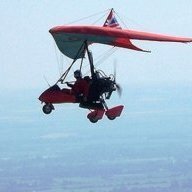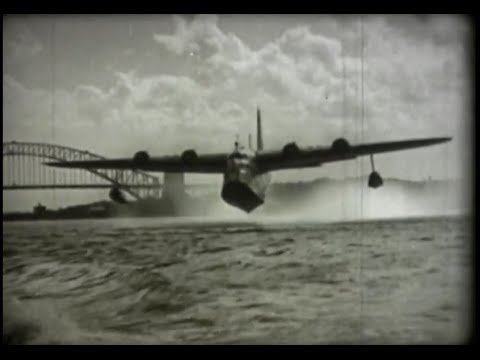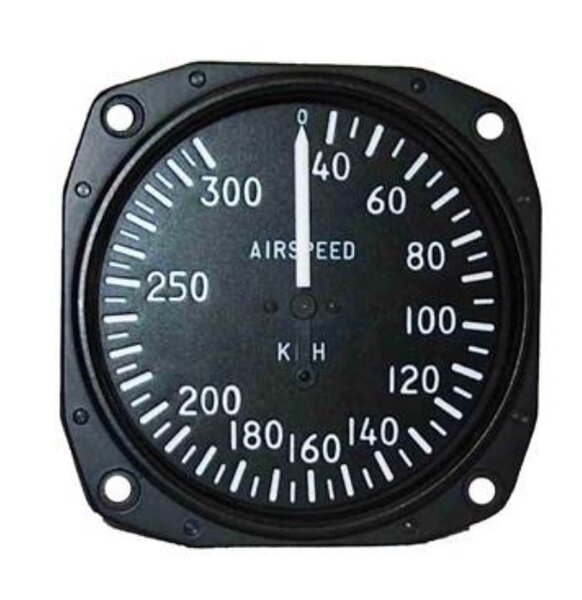-
Posts
2,674 -
Joined
-
Last visited
-
Days Won
32
Content Type
Profiles
Forums
Gallery
Downloads
Blogs
Events
Store
Aircraft
Resources
Tutorials
Articles
Classifieds
Movies
Books
Community Map
Quizzes
Videos Directory
Everything posted by kasper
-
Unlikely - the J99 was in the aeronca but never the nipper. Nippers had Stamo VW based flat fours or for Ron C his has upgraded to the J2200
-
There are three out there in oz
-
One of the many reasons I try to play with high voltage as little as possible - I’m very good at following wiring diagrams and processes drafted by people who know what they are doing and what’s safe for me to do.
-
Not quite just aligning with corporate law. It also allows the board to set additional required capacities or experience for applicants. This is a further step away from any member being able to put themselves forward in a year as they may meet all the corporate law requirements and be a member BUT can't nominate because they may lack an experience or skill that the board have set as a requirement for that election. Under the changes its perfectly legit for the board to add a restriction to nominations like must be an Raaus instructor. Or they may require a registered accountant. Or they may require a person with LAME registration. All possible under this change but still no requirement for an actual set of election rules to be published to members. Ill be voting no as this is not simply a clean up to align with the corporation's law which already applied but an extension of powers TO the board in respect to who can be put forward by the members to join the board. Not needed in my opinion. It's already open to the board to express their desire for some areas of skill when calling for nominations but this change means they control in part the board skills and only allow parts of membership to nominate
-
Hmmm. Out in the weather. Rainwater as an electrolyte. Out of sight for easy inspection. Lots of electricity. I say a simple same metal spiral clamp would be the best solution over any form of screwed clamp with different metals involved that has the perfect conditions to corrode and fail without warning.
-
Twin engine is only within 95.10. For that you need the wing area limit to be met so you are correct - a cri cri will never fit within 95.10 due to inadequate area for the more. and twin engines means it’s outside 95.55. nothing to stop twin engines in 95.10 … I recall a lovely little flying boat with push/pull engines in the 90’s.
-
The cao 95.10 and 95.55 do not exclude turbines. They refer to engines. 95.10 does not limit to 1 engine and does not require a propeller so they can be jet. 95.55 experimental/Jone built/kit requires 1 engine and 1 prop so turbine like this is ok. Cost to buy and LPH might not be raaus friendly but they are possible.
-

Taildragger Conversion
kasper replied to Peasant_Pilot's topic in Aircraft Building and Design Discussion
Sorry spacey - you are 95% wrong on your description of tail heavy and engines pushed forward. Tailwheel airfraft are never 'tail heavy' and the engine on a nosewheel is rarely moved for balance reasons. The CofG range that is safe in relation to the wings centre of lift is exactly the same regardless of undercarriage configuration on an airframe. The issue on ballasting (or mass relocation) dependent on undercarriage design is in relation to the distribution of the undercarriage mass around the CofG. In all cases the main legs and wheels are the greater mass with the tailwheel/noseleg being a less mass. When you move the heavy main legs from in front of the CofG to the rear of it when changing an airframe from tail to nose landing you need to offset this by moving mass from behind to the front ... and you do that by taking a tailwheel mass and replacing it by the noseleg. It is quite often the case that the nose leg mass on a short moment arm is around the same total moment as the lighter tailwheel mass on a longer arm and you end up with no net balance adjustment required. Some designs are not so lucky - and the lighter and smaller the design the more likely it is that the landing gear changes will require reballast or other mass adjustments. In some cases this is by choice done with an engine move as it stops the empty weight growing as much but thats a choice. Engine placement on really small and light airframes is more of an engine mass issue - the Hummelbird has a design engine mass with the half vw of 29% of empty being enigine and that engine is a long way forward of a very small CofG range the 4 engines you mention for the Hummebird vary the engine mass by up 25% either side of the half VW ... if you are comparing those configs of Hummelbird you looking at are moving the location of the engine on the Hummelbird not due to landing gear config but due to engine choice. -
More than just wood in them - full wood including box spars right up to the second series of the mk19 when they made a metal wing. Some of the earlier wooden wing ansons used in airlines were fitted with metal wings as they aged into the 1960’s but the fuselage was not exactly spacious or quiet and much more modern and efficient airframes saw them off.
-
However, whilst this is the object of that company bunkered down in Canberra: "6 Object The Company’s object is to pursue the following purposes: (a) the advancement of aviation in Australia including to take all actions howsoever connected with the design manufacture of all and any machine object device and/or concept that relates directly or indirectly to the advancement of flight whether powered or otherwise whereby such flight is under the control, supervision or participation in any degree by human activity, and (b) to encourage training in the art and science of aviation, piloting, operation, design, manufacture of aviation and/or space craft of whatsoever design and capability." We have bugger all hope of refocusing the direction of travel. It includes unlimited weight, unlimited classes, covers powered and unpowerd flight and explicitly includes spacecraft - this is the core problem - we have a company with an unlimited scope - if it is not directly attached to the earth its within their possibility and they want it all. Add to that the rusted on instructors/agents for aircraft sales that are involved in the company and you have, from an old school ultralight perspective no viable ability to have any voice heard at all. Ever. I'm a compliance minded person so I am still within the playpit of RAAus BUT there is only so long you have have the sand kicked in your face and any toys you like taken away before you walk away and decide there is no longer a passtime (not a sport) of ultralight/recreational flying that has any attraction.
-
And if they want to hand over up to 1500kg that means then the four seat GA come after 2 seat GA ... wonder how much leveled up will apply to training and maintenance on that one within RAAus ...
-

VH to 19 Registered aircraft
kasper replied to Geoff_H's topic in Aircraft Building and Design Discussion
I can’t say now. Contact them in Germany as there is no OZ agent http://hirthengines.com/2-stroke-engines/ mine was second hand NOS and I built an aftermarket ignition and carb setup. Mine was a bare spare core from an abandoned drone program I was involved in many years ago … its a lovely engine as are the KFM107s. -
It may not be compulsory ... but the evidence from the past two releases of the tech and ops manuals from RAAus shows that everything is leveled UP to the highest degree that they have coverage of ... as soon as type cert airframes over 45knts are in the pool what the hell hope is there for the few of us left tinkering around with self designed self built single seat aircraft? Already I find it ridiculous that RAAus completely 'forgot' about a whole control type and now not only do I have no biennial or medical reqs for one group of airframes but the CAO was modified without care and now that control group is not covered by the CAO at all throwing several airframes reg into question and one of my half built projects parked up due to no registration path at all. By all means be positive about something that will help a few more people and airframes get lower cost flying but be aware you are getting this at the cost of others on the other end. And I'll be open and frank - I do not fly RAAus coverage airframes outside by RAAus reg and cert ... BUT I know of several beautifully maintained airframes that continue to fly outside of reg and cert of pilots simply because the whole CASA/RAAus admin and control became far too much for their fun flying and I can completely understand where they are coming from - its just I have not taken the step outside the system that they have. Edit - this is not an attack on you Ken - its the system and progression on control that is getting worse in my opinion.
-

VH to 19 Registered aircraft
kasper replied to Geoff_H's topic in Aircraft Building and Design Discussion
Your options are limited. Second hand out of production engines that fit your need: Rotax 277 single pot two stroke = 27hp (in my experience ponies not horses) KFM 107ER or ERMaxi = horizontal twin two stroke - electric start and 25-30hp (in my experience horses not ponies) - 24-25kg installed (I have 3 of these engines) Current production Hirth F23 = horizontal twin two stroke - electric start and 50hp (in my experience horses not ponies) - 26kg installed (I have 1 of these engines - best engine BUT expensive) Beyond that you are looking direct drive high prop RPM with model engines or if you can get hold of them military drone engines ... I have 5 former drone engines putting out 26hp and are only 15kg including prop - but they are sinning the prop at near 6000rpm I cannot think of any viable 4 strokes ... but given you are looking to replace 2 x 2strokes with a single staying 2 stroke should be OK for you. Cheers. -

VH to 19 Registered aircraft
kasper replied to Geoff_H's topic in Aircraft Building and Design Discussion
Spacey is once bitten VERY shy ... he built what was supposed to be a 95.10 registered airframe back in the early 1990's and when he was finished they had changed 95.10 to introduce the wing load restriction and he was caught out. The easiest thing with RAAus it to understand single seat has two possible paths limited by either wing load or 45kts stall in landing config. Work out your MTOW wing load and either eliminate or consider 95.10. All of the procedural steps are then within the Tech Manual and given you mihgt have a half built airframe call RAAus and talk to tech as they can accomodate their processes to suit the case in hand eg moving from GA/SAAA build to RAAus build part way through. RAAus tech are very approachable and talk plain english. Cheers -

VH to 19 Registered aircraft
kasper replied to Geoff_H's topic in Aircraft Building and Design Discussion
If you go RAAus then with a single seat aircraft you have two paths with 3 end points: 1. engine = two options for rego: a. Stall speed 45kts or less wing area unimportant => CAO95.55 covers you and you get 19- rego b. Wing loading at MTOW 30kg/m^2 or less and you can alternate to a. => CAO 95.10 can cover you and you get 10- rego 2. 2xengines = 1 option for rego => Wing loading at MTOW 30kg/m^2 or less => CAO 95.10 can cover you and you get 10- rego 95.10 is the only current RAAus rego class that allow multi engine/multi prop/jet propulsion BUT you are limited to single seat and 30kg/m^2 at MTOW 95.10 does not work for efficient little single seaters because it gets caught with the MTOW wing load => not enough wing 95.55 does not allow jets or multi engine or even 2 propellers from 1 engine - but allows any wing area so long as stall speed is lower than 45knts at MTOW -
Awwww. The fun of learning in a two seat thruster is the power off performance - its the reason there used to be a need to have an AUF training for pilots from GA ... no inertia, all the drag and minimal airspeed between cruise and stalled brick was and remains a very different set of demands on pilots. Still, if you go back to the thruster now that you can handle a tailwheel you might find it a lot of fun ... and a T500 engine out at MTOW can be handled quite safely in full power off safely into a unexpected paddock outlanding. Plus there is less to worry about in a thruster outlanding - you know where you are arriving - its underneath you 😀 Instructing on thrusters, drifters and LSA55 Jabs back in the day was always fun and meant you got a wide range of experience, throw in weightshift and skydiving and my 20's were a lot of fun.
-

ASI in MPH. Australia. Would you?
kasper replied to danny_galaga's topic in Instruments, Radios and Electronics
I think I’ll go for kph for my single seater … it’s not fast and every little helps 😛 it does nearly 80k/h in cruise. -

Which ultralights will I actually fit in?
kasper replied to phlegm's topic in Trikes and Microlight Aircraft Usergroup
Leave the lid off and 6’2” fits in the sapphire … but 105 is a tad high for them … a 95.10 sapphire legally can carry 105kg but you’ll need to ballast the tail and accept curve of the earth climb 😛 -
You can obtain the drawing sets and a permission to build for no cost if you want - private message me if interested as it’s a two step process. or AAW here in oz are building a metal dw1 https://www.aircraftkits.com.au/blank-5/
-
Bloody spell check!
-
Brief be12
-
Cost of training ... for me in the mid '90's training on Jab LSA55s I paid $105/hr when training and $90/hr wet hire after license. I did my AUF certificate in 10 months Jan-Dec of weekends and had the pax and cross country for around $5,775. With inflation that would be $10k today. The flying school still exists today (Dave at the Oaks) and is even using the same airframes (plus new ones) but the hour training/hire rates for the LSA55 today are lower in real terms than in 1999 - $170 training and $140 wet hire.
-
Yep, Stralan English was always fun with my calls in the UK ... particularly as my plane was G-CCZR ... that "Charrrrleeee Charrrleee" (as the English heard it) was always getting me a smile. But the most fun was the French lady who came over the radio after by inbound call to Abbeville with a correction ... "French Language only please" ... she probably regretted that because my French position calls after that were in even more mangled French than my English ones 😀
-
The main profile pic is the four seater White Lightning not the single seater Lightning Bug.









